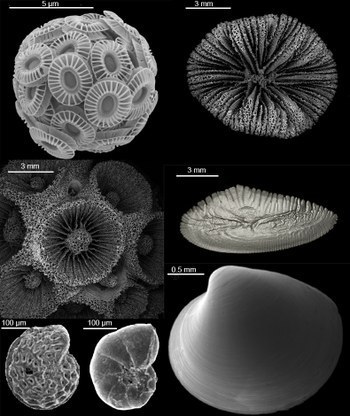Erik Caroselli - Giuseppe Falini - Silvia Franzellitti - Stefano Goffredo - Arianna Mancuso - Fiorella Prada - Giovanni Valdrè

Mineralization of marine organisms, known as biomineralization, has been a subject of study for centuries. This is not only because of the beauty of calcified hard structures, of which shells are probably the best known example, but also because of their unique physical and mechanical properties - e.g. a shell made almost entirely of calcium carbonate has a fracture resistance about three thousand times higher than the latter - which derives from the ability of organisms to control the formation of mineralized tissues from the nano- to macro-scale.
All this happens with the involvement of specific biological macromolecules, generally glycoproteins, whose biosynthesis is controlled in space and time by specific cells, giving the organism a certain "biological control" over the biomineralization process. The degree of biological control is species-specific and has important implications not only on the physical and mechanical properties of biominerals but also on their use for paleoclimatic reconstructions and on the response of these organisms to environmental variations. In fact, the calcium carbonate structures secreted by calcifying organisms represent a precious source of paloenvironmental and climatic information. During their growth, in fact, organisms such as foraminifera, molluscs, and corals incorporate in their shells, and skeletons geochemical signals correlated to precise chemical-physical properties of the water masses in which they live in.
However, the organic molecules involved in the synthesis of calcium carbonate determine a so-called "vital effect". This vital effect, on one hand modifies the geochemical signal recorded in calcareous structures, preventing in certain cases their use as paleoclimatic archives, but on the other hand allows these organisms to modify the internal environment in which the biomineralization process takes place. Thus, in certain cases, calcifying organisms that are able to exert a strong control on the biomineralization process seem less affected by environmental changes, with important implications for future climate change.